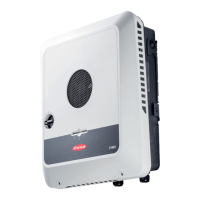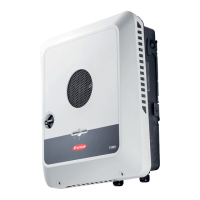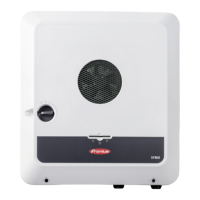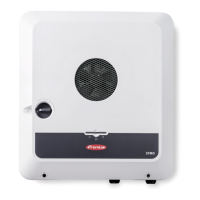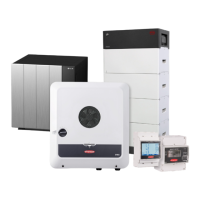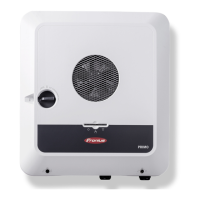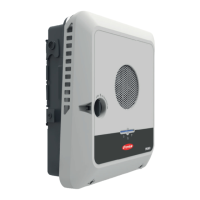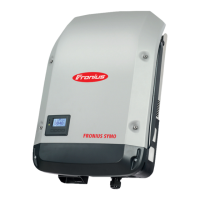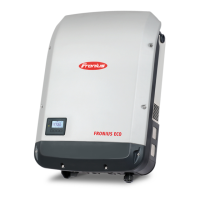The following points regarding cabling must be considered
-
The main contacts of contactors K1 and K2 must be installed between the
Fronius Smart Meter and the residual current circuit breaker of the inverter
and the residual current circuit breaker of the backup power circuits.
-
The supply voltage for contactors K1 and K2 is provided by the public grid
and must be connected to phase 1 (L1) downstream of the Fronius Smart
Meter and fused accordingly.
-
Actuation of contactors K1 and K2 is carried out by the external grid and sys-
tem protection unit.
-
The external grid and system protection unit must be installed after the
Fronius Smart Meter. Precise installation and wiring instructions for the ex-
ternal grid and system protection unit can be found in its separate Operating
Instructions.
-
The remote trip input of the external grid and system protection unit must
be set to NC according to the manufacturer's Operating Instructions.
-
To ensure residual current circuit breakers function in backup power mode,
the connection between the neutral conductor and the ground conductor
must be established as close as possible to the inverter, but in any case up-
stream of the first residual current circuit breaker. An NC contact is used for
this purpose for the main contacts of contactors K4 and K5. This ensures
that the ground connection is established as soon as the public grid connec-
tion is no longer available.
-
The supply voltage for contactors K1, K2, K4 and K5 is provided via phase 1
(L1) of the public grid and is switched via the external grid and system pro-
tection unit.
-
An NC contact for relay K3, which activates the remote input of the external
grid and system protection unit, interrupts the supply voltage to contactors
K1, K2, K4 and K5. This prevents the ground connection from being immedi-
ately disconnected again when power returns to the public grid and the
backup power network of the inverter from being switched to the public grid.
-
The NO contact of relay K3 gives additional feedback to the inverter on
whether the locking was successfully performed by relay K3.
-
Additional inverters or other AC sources can be installed in the backup
power circuit downstream of the main contacts of K1 and K2. The sources
are not synchronised to the network of the inverter because this backup
power network has a frequency of 53 Hz.
Manual switch to
backup power 3-
pin separation,
e.g. Austria / 4-
pin separation,
e.g. Germany
Circuit Diagrams
-
Manual switch to backup power 3-pin separation, e.g. Austria on page 194.
-
Manual switch to backup power 4-pin separation, e.g. Germany on page 195.
IMPORTANT!
The Circuit Diagrams to be used are to be applied depending on the country
standard and implementation regulations of the grid operator.
Cabling of backup power circuit and non-backup power circuits
If not all the loads in the home need to be supplied in a backup power situation,
the circuits need to be divided into backup power circuits and non-backup power
circuits. The total load of the backup power circuit must not exceed the rated
power of the inverter.
The backup power circuits and non-backup power circuits must be fused separ-
ately according to the required safety measures (residual current circuit breaker,
automatic circuit breaker, etc.).
In backup power mode, only the backup power circuits and inverter are discon-
nected from the grid by the changeover switch Q1. With all-pin separation, an ad-
ditional earth connection is established. In this case, the loads in the non-backup
circuit are not supplied by the inverter.
91

